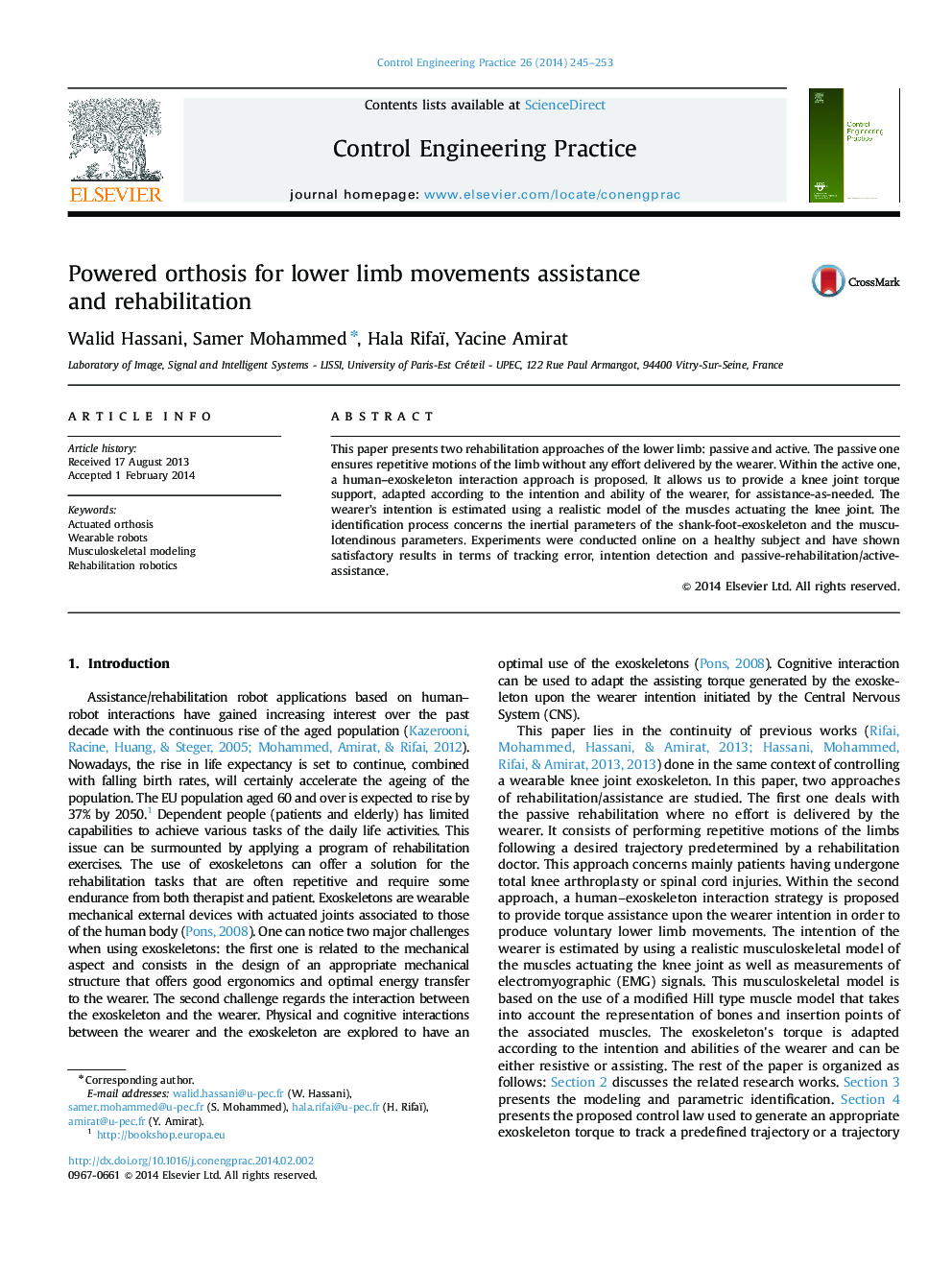| Article ID | Journal | Published Year | Pages | File Type |
|---|---|---|---|---|
| 699521 | Control Engineering Practice | 2014 | 9 Pages |
This paper presents two rehabilitation approaches of the lower limb: passive and active. The passive one ensures repetitive motions of the limb without any effort delivered by the wearer. Within the active one, a human–exoskeleton interaction approach is proposed. It allows us to provide a knee joint torque support, adapted according to the intention and ability of the wearer, for assistance-as-needed. The wearer׳s intention is estimated using a realistic model of the muscles actuating the knee joint. The identification process concerns the inertial parameters of the shank-foot-exoskeleton and the musculotendinous parameters. Experiments were conducted online on a healthy subject and have shown satisfactory results in terms of tracking error, intention detection and passive-rehabilitation/active-assistance.
